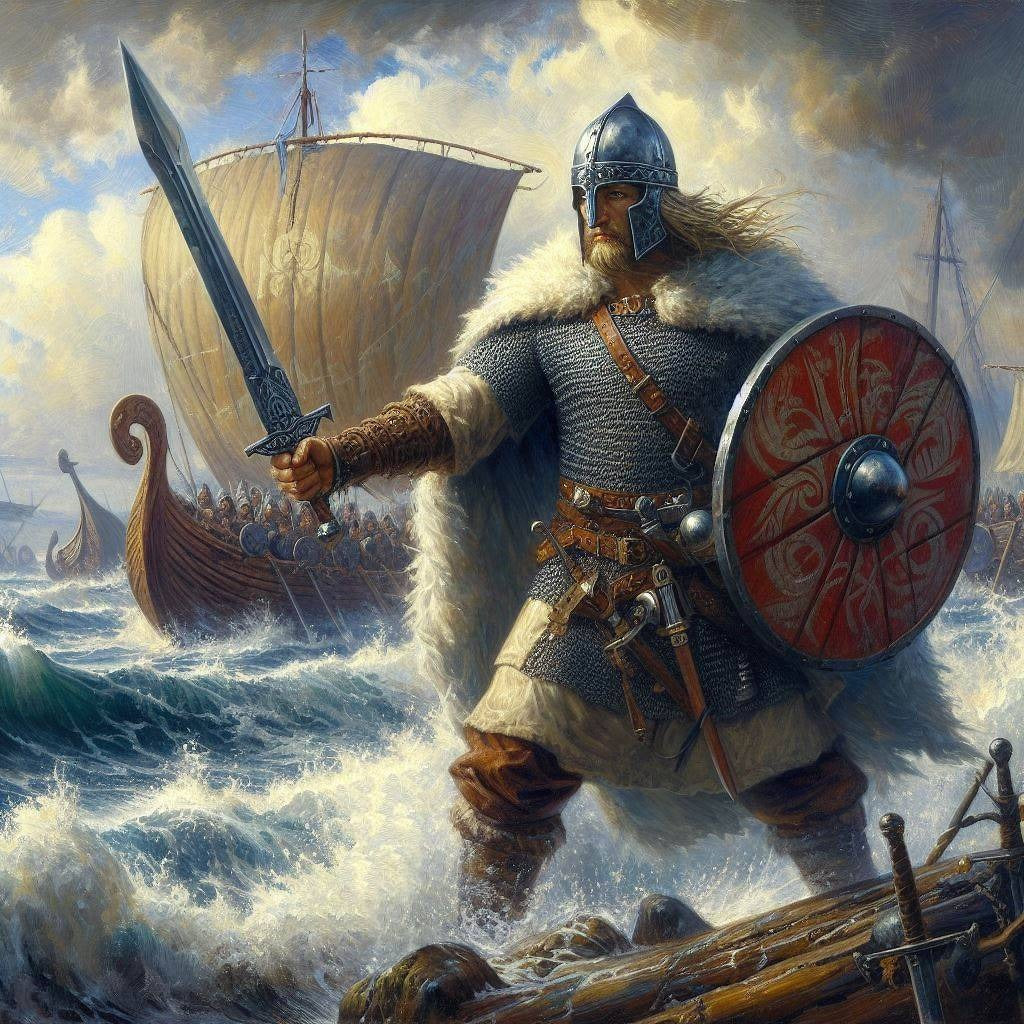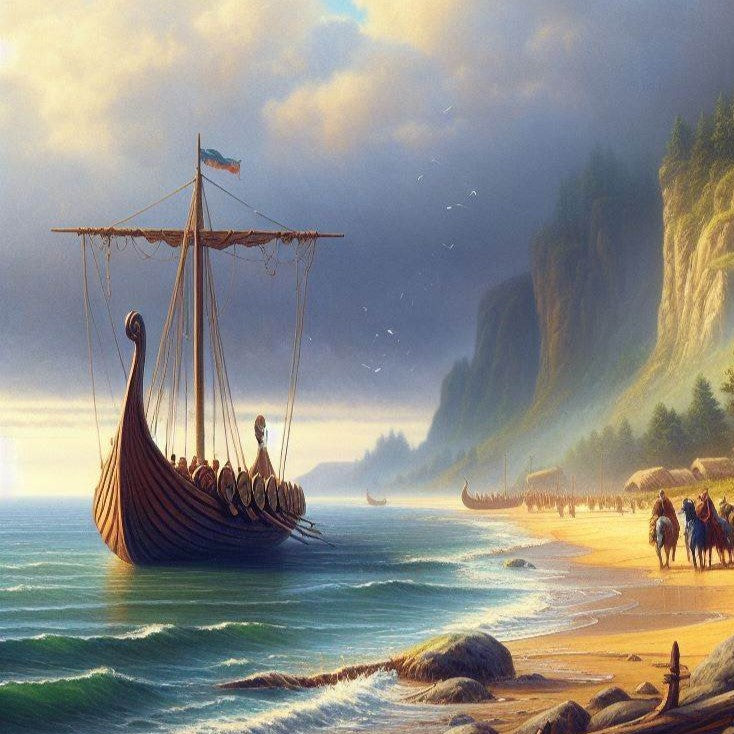Unleashing the Legend: Exploring Fenrir the Wolf
In the rich universe of Norse mythology, few figures evoke the same sense of primal power and foreboding as Fenrir Wolf. As one of the monstrous offspring of the trickster god Loki and the giantess Angrboða, Fenrir embodies chaos, destruction, and the unstoppable forces of nature. Let's delve into the depths of this fearsome creature's lore and significance within Norse cosmology.

Origins and Parentage of Fenrir
Fenrir's lineage is as enigmatic as it is ominous. Born from the union of Loki, the mercurial shape-shifter, and Angrboða, a giantess whose name translates to "She Who Brings Grief," Fenrir's birth heralded a dark prophecy. Alongside his siblings, the serpent Jörmungandr and the half-dead, half-living being Hel, Fenrir was destined to play a pivotal role in the events leading to Ragnarök, the cataclysmic end of the world in Norse mythology.
The Chained Beast
From a young age, Fenrir's ferocity and growing size alarmed the gods, who foresaw the threat he posed. In an attempt to contain him, the gods attempted to bind the giant wolf on two occasions, both of which ended in failure. It was the third attempt that succeeded, but only with the help of a magical chain forged by the dwarves.
The tale of Fenrir's binding is a saga of deceit, woven by the gods under the guise of testing the wolf's strength against an unbreakable chain. The first and second chains, crafted by the gods themselves, shattered easily under Fenrir's relentless thrashing. Determined to contain the monstrous wolf, the gods turned to the dwarves for aid, tasking them with forging the strongest chain ever seen by man and deity alike.
When the chain, known as Gleipnir, was finally ready, the gods presented it to Fenrir. The giant wolf, wary of potential treachery, hesitated to test the strength of the chain before him. Sensing his suspicion, the gods made a pact with Fenrir – he would consent to be bound only if one of the gods placed their hand in his mouth as a sign of trust. Tyr, the valiant god of war and justice, stepped forward, aware of the risks involved. With resolve, he offered his hand to Fenrir, sealing his fate and fulfilling the pact.
As Fenrir realized his inability to break free, he seized Tyr's hand in his jaws, severing it from his arm. With the deed done, Fenrir was bound by Gleipnir, his ferocious power contained. The gods then anchored the chain to a mountain, while a sword was wedged into Fenrir's jaws, keeping his mouth agape in eternal restraint.
In his impotent fury, Fenrir unleashed a deafening howl that reverberated across the realms, while a frothy river named 'Ván' flowed from his gaping maw, a testament to the boundless rage of the captive wolf. Thus, for the time being, the gods and the realms were safe from Fenrir's wrath, but they were destined to confront his fury during the prophesied end of the world – the legendary Ragnarok.
Ragnarök and the Final Battle
The prophecies have long foretold that Fenrir will play a pivotal role in the apocalyptic battle, a harbinger of chaos and destruction. In the prophesy, as the appointed time of Ragnarok draws near, the bonds that hold Fenrir begin to weaken.

As the forces of darkness gather and the world trembles in anticipation, Fenrir, with jaws that can devour the sun and the moon, breaks free from his chains with a ferocious roar that echoes across the Nine Realms. With every step he takes, the earth quakes, and the skies grow dark with foreboding.
Driven by an insatiable hunger for vengeance and chaos, Fenrir joins the ranks of the monstrous army led by Loki, his father, and the frost giants, sworn enemies of the gods. Together, they march towards Asgard, the realm of the Aesir, with a single purpose: to bring about the end of all things.
The gods, aware of the impending doom, prepare themselves for the final battle. Odin, the Allfather, rallies his warriors in defense of Asgard, while Thor, the thunder god, wields his mighty hammer Mjolnir with unmatched fury. But even their courage and strength cannot stem the tide of destruction unleashed by Fenrir and his allies.
In the heart of the battle, Fenrir clashes with the gods, his jaws snapping at their heels, his fury unrelenting. With each foe he fells, the chaos he wreaks grows stronger, until it seems as though nothing can stand in his way.
But amidst the carnage and despair, a lone figure emerges – Odin's son, Vidar, the silent god of vengeance. With a roar that matches Fenrir's own, Vidar leaps upon the monstrous wolf, driving his sword deep into Fenrir's heart, fulfilling the prophecy that has long foretold their destined confrontation.
As Fenrir falls, his howls of rage echo across the battlefield, mingling with the cries of the dying and the clash of swords. And with his death, the fate of the world is sealed, for Ragnarok has come to pass, and the old gods are no more.
Symbolism and Legacy
Fenrir Wolf embodies themes of primal instinct, inevitability, and the cyclical nature of existence. As a monstrous being born from the union of a god and a giantess, he blurs the lines between divine and monstrous, challenging traditional notions of order and chaos.
Furthermore, Fenrir serves as a potent symbol of the untamed forces of nature and the inevitability of cosmic entropy. His role in Ragnarök underscores the Norse belief in the cyclical nature of existence, where destruction and rebirth are inseparable parts of the cosmic cycle.
In modern times, Fenrir Wolf continues to captivate imaginations, appearing in various forms of media, from literature to video games, as a symbol of untamed power and the looming specter of apocalypse. Yet, within the shadowy realms of Norse mythology, Fenrir Wolf persists as a timeless warning, reminding us of the unbridled forces that lurk beyond the boundaries of the known world.









